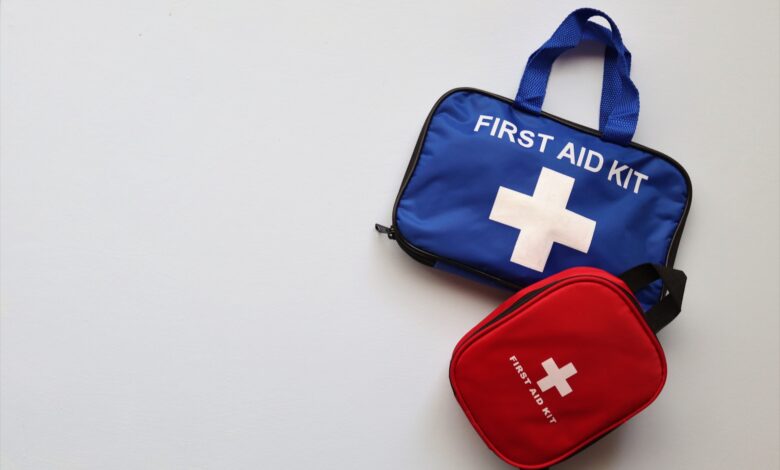
[ad_1]
06 Apr Essential First Aid and CPR skills for Travelers
When we talk about the skills every traveler should learn, CPR and First Aid knowledge will not feature in the top five list for most people. Mostly, people strain to learn a few words in a foreign language and how to bargain for the cheapest flights to the intended designations.
However, veteran travelers who understand that accidents and minor injuries are inevitable in any traveling spree will know the reasons for learning some First Aid and CPR skills.
This post will outline the essential First Aid and CPR skills every traveler should learn and the importance of learning them.
Why is the travel medical kit important?
While we are crafting the plans of our next activity, like the allure of visiting a remote area or mountaineering spree, we often don’t feature minor injuries and accidents.
Most of the time, we assume the tour guides or the agency will provide for our medical emergencies, which sometimes can fail to materialize.
Moreover, a personal First Aid kit will be handy whenever you need it regardless of the distance. Added with the necessary skills, you can help contain a minor injury and help preserve life before reaching for professional treatment.
Benefits of having a personal First Aid kit.
- You can customize it according to your destination. For instance, you can carry more of the items you are likely to use more and less of the things you will not need.
- You will save a few bucks on unnecessary items not matching your travel destination. For example, you won’t need a thermal blanket when visiting the Sonoran desert in Arizona, USA.
- It is, therefore, cheaper to build a personal medical kit than buying one online since you will only pack necessary items matching your destination.
- Sense of satisfaction. Packing a personal First Aid kit offers self-satisfaction because you are sure of the essential medical requirements you will need.
Essential CPR and First Aid skills every traveler should learn.
- How to clean a wound.
Traveling involves a lot of activities that can lead to minor injuries or accidents. And regardless of the degree of the damage, whether a minor scrape or deep cut, the first step towards recovery is cleaning the wound.
You are required to first clean your hands with water and soap or hand sanitizer before touching the wound. This is to ensure there’s no harmful bacteria on your hands before handling an open wound.
Next, you will take a clean cloth, paper towel, or a suitable absorbent and press on the wound to arrest bleeding. Once the bleeding stops, apply hydrogen peroxide on the wound or rinse the wound with clean water.
Once the wound is clean, apply ointment or antibiotic cream to keep the area moist until you reach for specialized treatment.
It is advisable to use water frequently as too much use of hydrogen peroxide can cause damage to the tissues.
- How to stop bleeding.
Unfortunately, accidents or injuries can happen to anyone at any time, and travelers are not exempted. Most of the time, these injuries lead to severe or small bleeding. Learning how to arrest bleeding can help preserve life before paramedics arrive.
When you are injured, and it leads to bleeding, take a sterile clean cloth and apply pressure on the wound; a T-shirt or any clothing will make a good option. Alternatively, raising the bleeding limb also reduces heavy bleeding.
It is essential to check for arterial bleeding as a person suffering from such may die faster if not rushed to specialized care.
- CPR skills.
Heart attack and cardiac arrests are among the leading causes of death, according to the American Heart Association. If you have a history of heart attack, it is essential to know the skills you can use to salvage the situation if it happens to you while traveling.
These skills will not only be helpful to you, but you will also be able to apply them to help anybody having a heart attack around you. Here are steps to follow when you want to perform CPR:
What to do before giving CPR.
- Clear the scene and secure it from any potential harm. Tap and the person and call out to confirm if the victim is conscious.
- Call 911 for help.
- Lay the person in the recovery position and open the airway and remove any foreign bodies and dentures.
- Confirm if the victim is breathing; listen keenly for any signs of breath. If the breathing has ceased, start CPR immediately.
Steps for performing CPR.
If you found that the victim has ceased breathing, put the heel of your hand in the center of the chest and place the other hand on top. Push hard and push fast, at a depth of two inches consecutively at an interval of 100 compressions per minute.
With the victim’s head tilted back, pinch the nose and put your mouth over the victim’s mouth and blow in to make a chest rise. Give two breaths and continue pressing.
Confirm if the person is choking if the chest does not rise on the second breath. It is also recommended that you check for any wounds on the mouth to avoid the risks of oral STIs.
Keep on performing chest compressions and cycles of breathing until the victim shows signs of life or trained professionals are on the scene.
Conclusion.
Travelling is fun, and it is great to explore and learn new things. Unfortunately, accidents and minor injuries are inevitable on every occasion.
Therefore, first aid and CPR skills are essential for everyone before boarding the next flight to your preferred destination. Know how to clean wounds, stop bleeding and wound dressing. Also, get acquainted with CPR knowledge so you can help in case of a heart attack.
Safe travels.
[ad_2]
Source link






